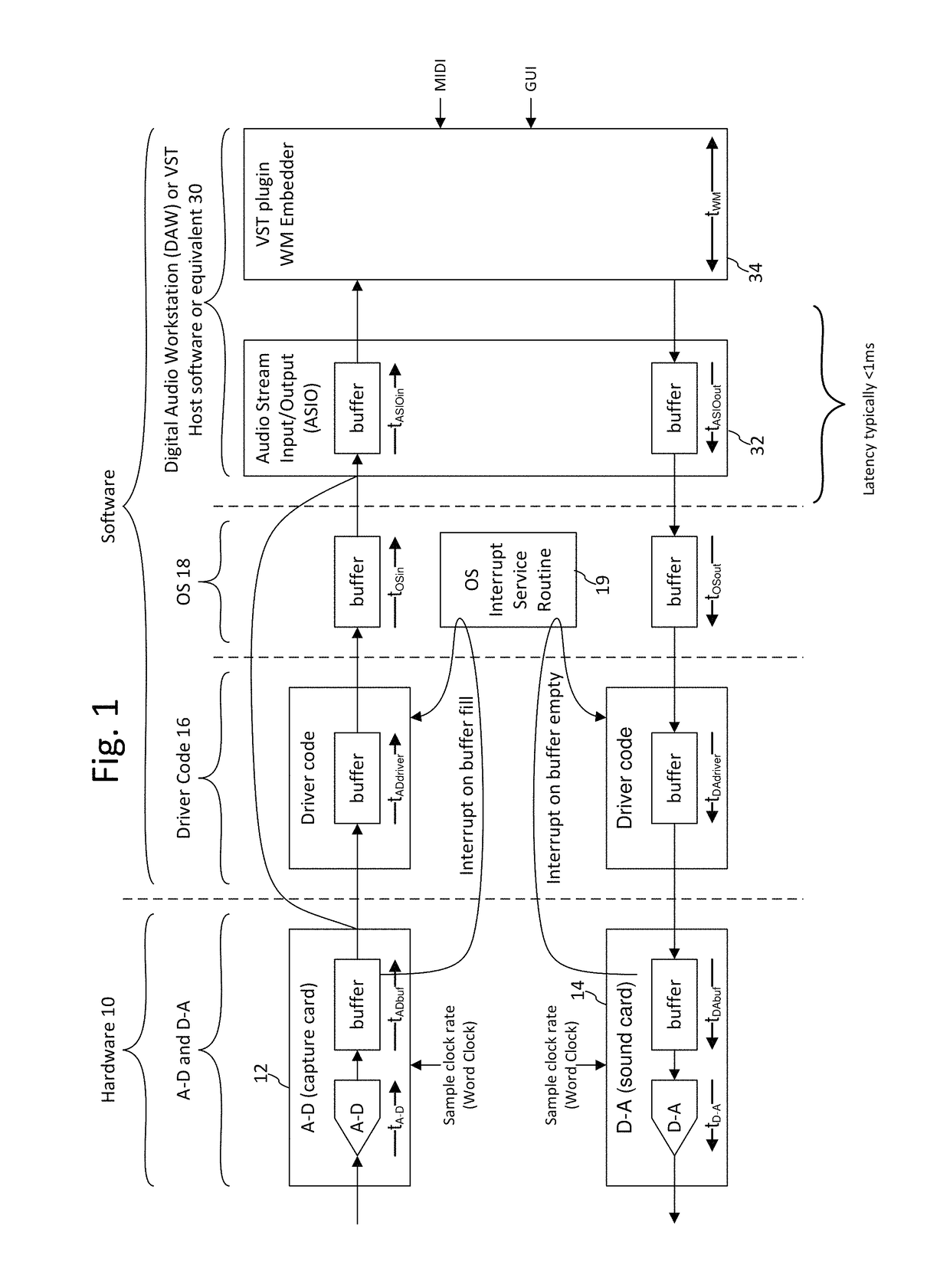Timeline reconstruction using dynamic path estimation from detections in audio-video signals
a dynamic path estimation and timeline reconstruction technology, applied in the field of digital signal processing for signal recognition and identification, and encoding and decoding auxiliary signals, can solve problems such as power consumption, design constraints, computational complexity, etc., and achieve the effects of reducing global cost, reducing time resolution, and improving robustness
- Summary
- Abstract
- Description
- Claims
- Application Information
AI Technical Summary
Benefits of technology
Problems solved by technology
Method used
Image
Examples
example processing
[0361 Parameters
[0362]In one embodiment, an example parameter that may optimized or otherwise suitably selected for watermark detection or decoding of auxiliary data is a frequency spectrum of the sampled audio input computed at the transform stage 604, where the frequency spectrum to be computed in support of a watermark detection process is different from that to be computed in support of a decoding process. For example, one or more first sub-bands of the frequency spectrum (e.g., with each sub-band only spanning a frequency range of 2 kHz, 4 kHz, etc.) may be computed in support of a watermark detection process whereas and one or more second sub-bands of the frequency spectrum (or the entire frequency spectrum) may be computed in support of a decoding process. In this case, each first sub-band could correspond to a location in the frequency spectrum where a watermark signal or a portion thereof (e.g., a version identifier, etc.) is, or is otherwise expected to be, found. In anoth...
PUM
 Login to View More
Login to View More Abstract
Description
Claims
Application Information
 Login to View More
Login to View More - R&D
- Intellectual Property
- Life Sciences
- Materials
- Tech Scout
- Unparalleled Data Quality
- Higher Quality Content
- 60% Fewer Hallucinations
Browse by: Latest US Patents, China's latest patents, Technical Efficacy Thesaurus, Application Domain, Technology Topic, Popular Technical Reports.
© 2025 PatSnap. All rights reserved.Legal|Privacy policy|Modern Slavery Act Transparency Statement|Sitemap|About US| Contact US: help@patsnap.com



